You are here
New Releases
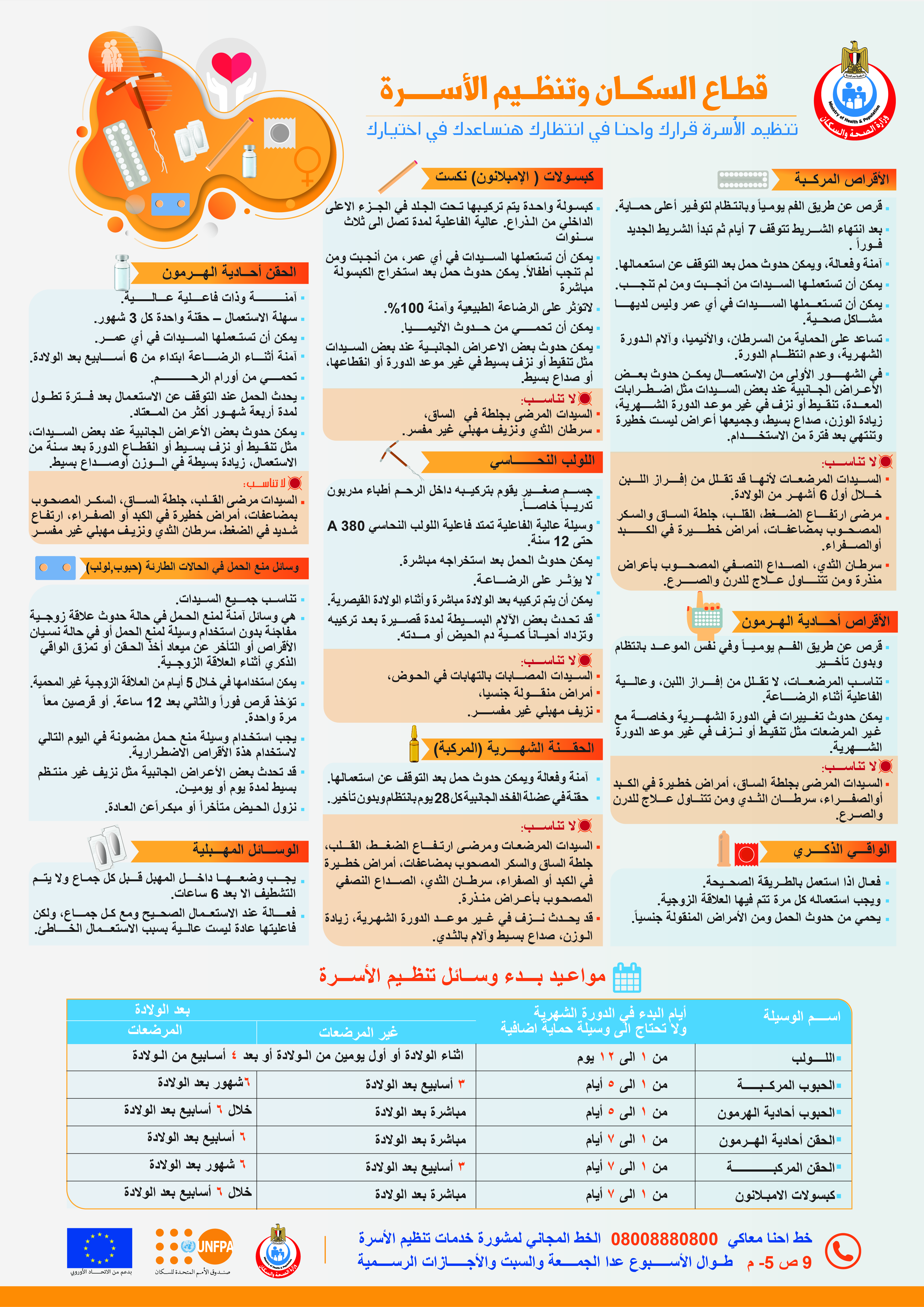

Humanitarian Action 2019 Overview
The UNFPA Humanitarian Action Overview for 2019 showcases global priority needs for women, girls and young people affected by crisis. It also highlights UNFPA's 2018 achievements and its priorities in humanitarian work.

Data Ecosystem Report to Enhance Sustainable Development in Egypt
Data Revolution carries many promising opportunities and capabilities that contribute to developing all life aspects and human activities on the global level. This can be achieved through a different global awareness of the role of data as a national asset; a tool to create value and wealth to enhance competitiveness, sustainability, and direct contribution to create knowledge and digital economies across the world; in addition to its particular contribution to enhance Sustainable Development Strategy 2030-SDSs that seeks to transform countries that signed the plan - 193 countries, including Egypt - into levels of more socio-economic and environmental sustainability and quality of life.

Egypt National Report: Addis Ababa Declaration on Population and Development in Africa beyond 2014 (AADPD +5)
Assessing Egypt’s performance during past years concerning the implementation of the Addis Ababa Declaration on Population and Development demonstrates its serious commitment to take the necessary actions to create positive environment for its implementation. Both Egypt 2014 Constitution and its Sustainable Development Strategy, Egypt Vision (2030), are instrumental in supporting the adoption of these commitments. Both focus on granting equal rights to all individuals, without any discrimination of any form, and emphasize the rights for health, education and safe environment. Both documents provide the umbrella that allow formulation and adoption of a set of policies, strategies and legislations needed to strengthen the opportunity to create a supportive environment for furthering the commitments within various specified pillars. Special attention is given to youth and women to enhance their participation in various aspects and to ensure their ability to enjoy all their rights without discrimination. This is documented throughout the assessment of different commitments of the AAPDP in this report.
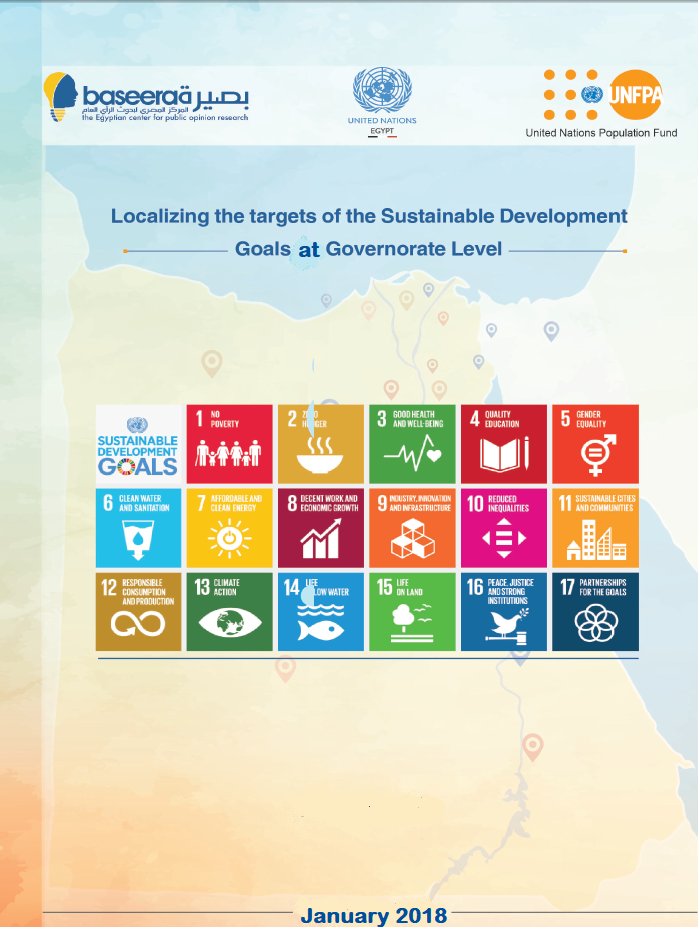
Localizing the targets of the Sustainable Development Goals at Governorate Level
In 2000 the United Nations proposed the Millennium Development Goals, which were adopted by almost all countries including Egypt. Egypt has succeeded in completely achieving some of these goals, while failing to achieve others. Gender equality in primary and secondary education enrollment, as well as reducing the under-five mortality rate, increasing prenatal care coverage, and increasing the proportion of access to improved drinking water source are all goals successfully achieved by Egypt. Other goals have not been achieved due to many challenges.
In September 2015, the global community adopted the 2030 Sustainable Development Agenda, which aims to improve the quality of people's lives through 17 goals. The goals are linked to a total of 169 target goals. Box 1 illustrates the SDGs.
The MDGs give some lessons learned that should be taken into account in the achievement of the SDGs. The study of the MDGs achievement at the governorate level reveals that the performance of different governorates has differed, while some have achieved their goals, others have not. This finding indicates that in order to achieve SDGs in Egypt, setting goals at the governorate level is essential. Moreover, governorates require implementation plans and periodically evaluation of their achievements.
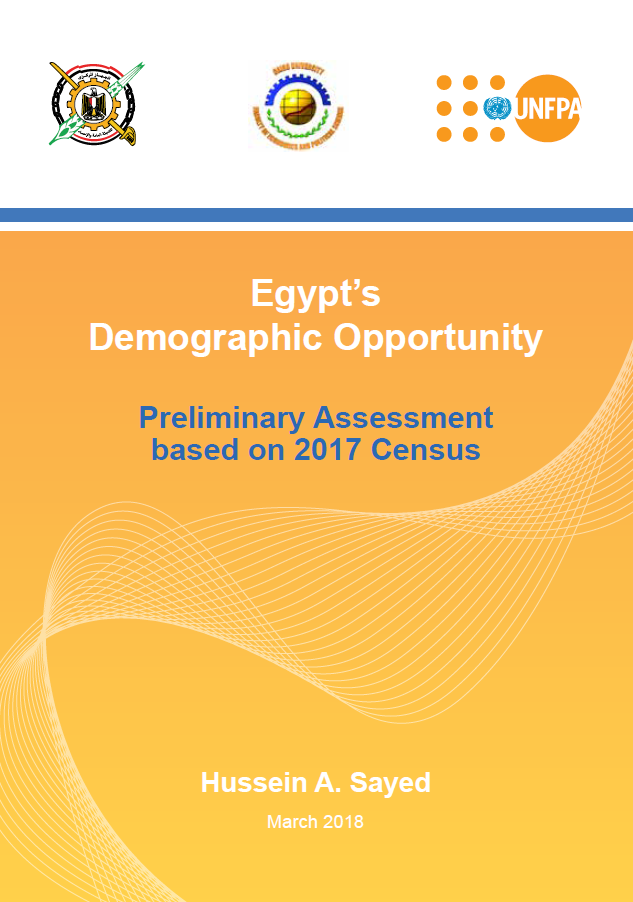
Egypt’s Demographic Opportunity (Preliminary Assessment based on 2017 Census)
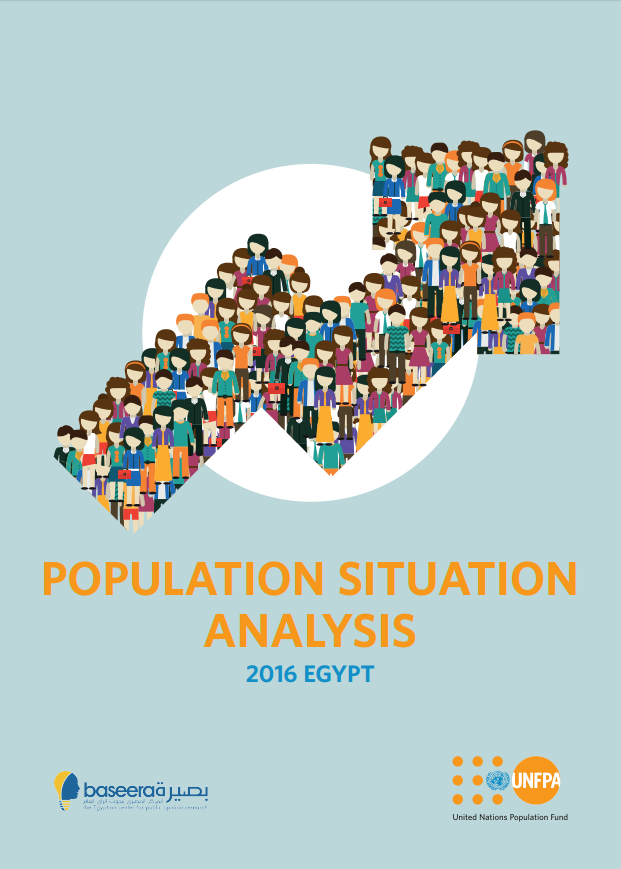
Population Situation Analysis Egypt 2016 Report
Population Situation Analysis Report (PSA) presents an analysis for Egypt’s latest population situation. This new analysis is required, given the changes in the political, economic, social and environmental arenas occurring in the recent few years. Through UNFPA’s support, Baseera was able to analyze Egypt’s population situation in collaboration with the National Population Council (NPC) in order to pave a roadmap of solutions.
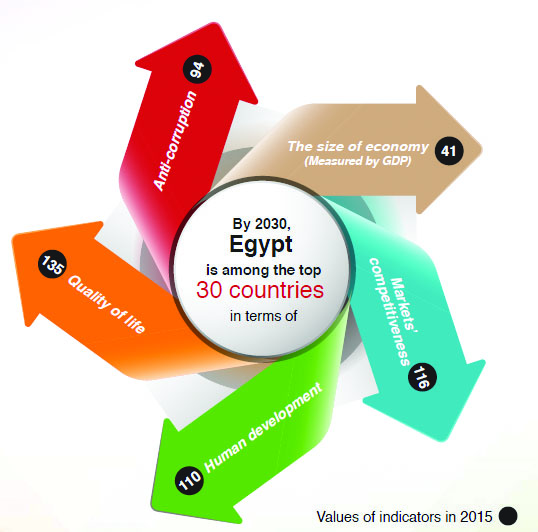
Population Situation Analysis Egypt 2016
new analysis for the current population situation in Egypt in 2016

Islamic Perspectives on Gender Based Violence
This manual focus on the Gender Based Violence as a topic to enhance gender equality between men and women in Islam.
